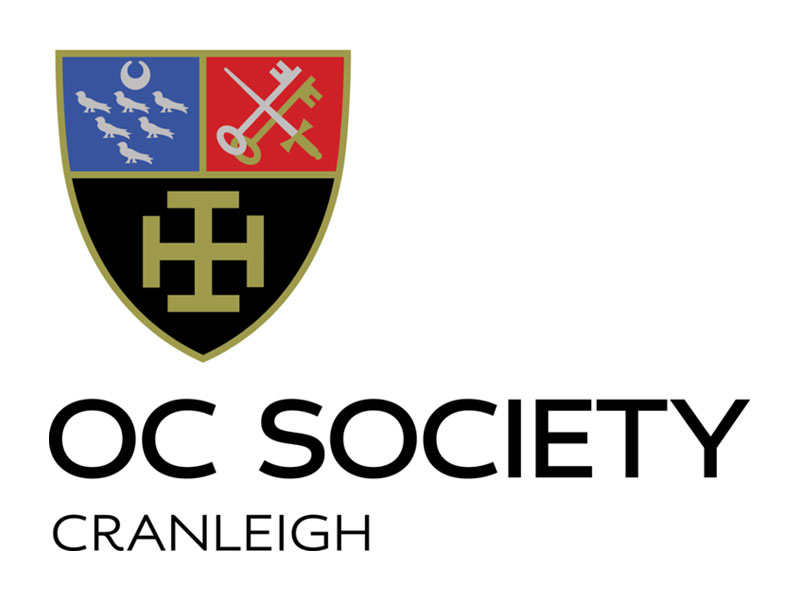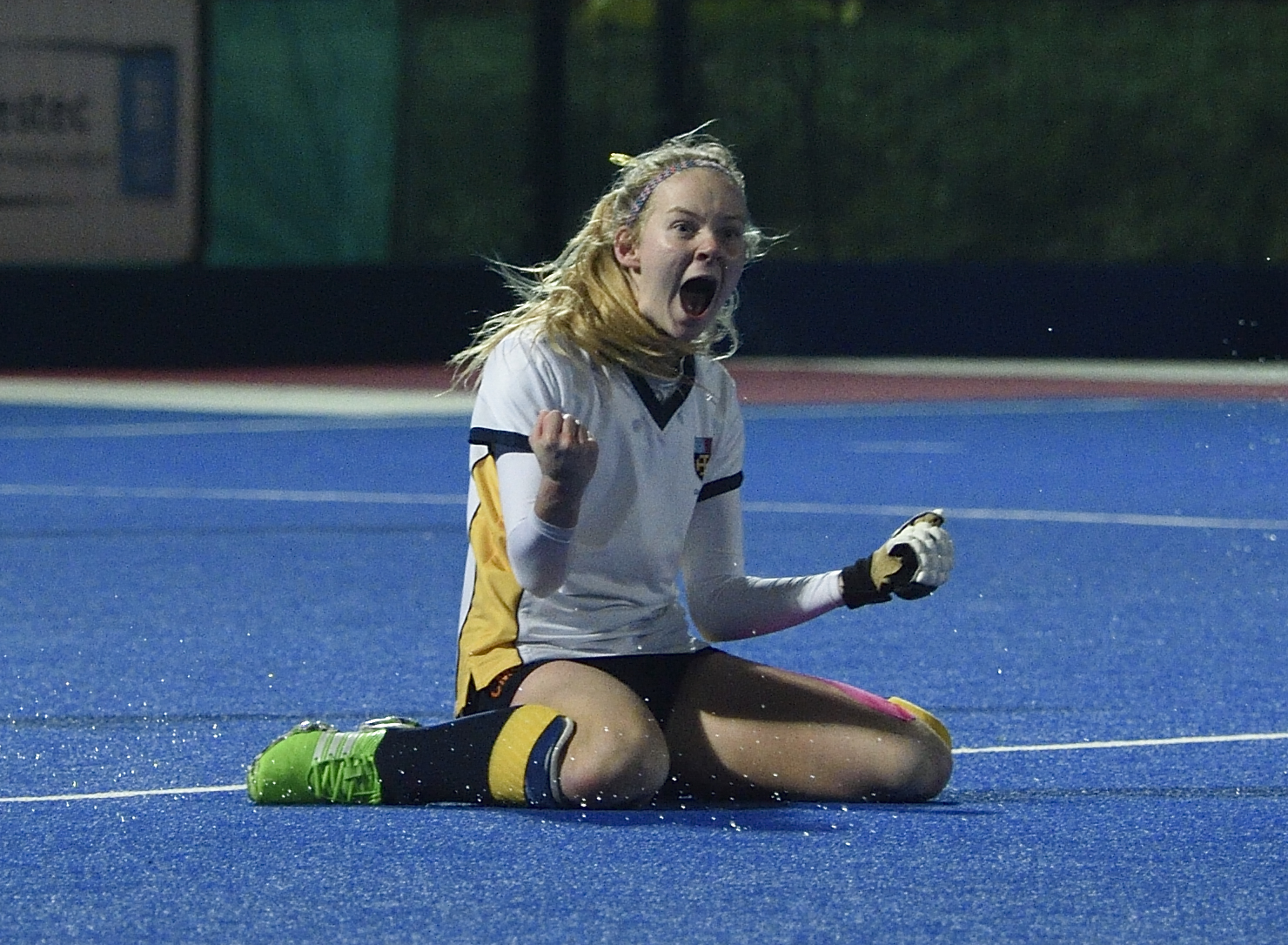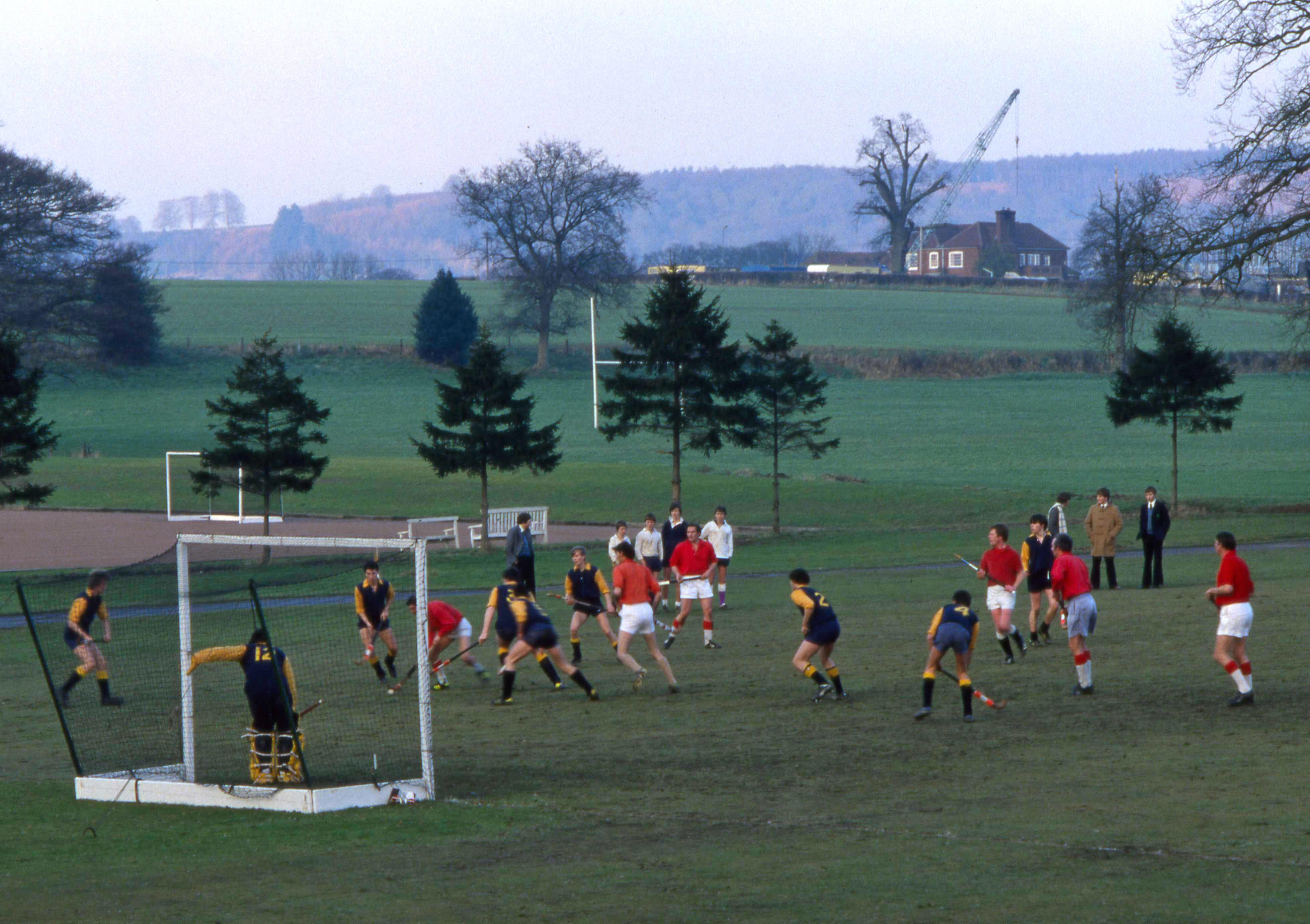 This month marks 100 years since Cranleigh School played their first hockey match. We look at the highs and lows of the last century.
This month marks 100 years since Cranleigh School played their first hockey match. We look at the highs and lows of the last century.
Although it may upset the rugby fraternity, the first game of hockey played by Cranleigh pre-dates the arrival of rugby by almost a decade. The Cranleighan reported in 1906 that the School beat a village side on the Common 2-1.
Hockey arrived as a major sport in the Lent Term of 1919, and Cranleigh was just one of many schools who adopted it around that time. And just as John Fawcus had championed the School’s switch from football to rugby three years earlier, he was also the man who set the hockey wheels in motion. The baton was picked up by Sholto Marcon, a teacher at the prep school who won 23 caps for England as well as an Olympic gold in 1920, on his arrival in 1921.
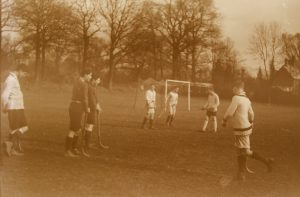 Initially, hockey had to share the term with rugby and athletics and was only played for a few weeks from March 1 on two pitches on Jubilee, but it soon extended to the entire term. The early years were not easy as boys struggled to learn a new game on pitches not really good enough for the purpose, and Marcon had to fall in with the demands of rugby. “It was no uncommon thing to find that on the day when one of the few hockey games had been arranged, some of the players had been commandeered for rugger,” he said.
Initially, hockey had to share the term with rugby and athletics and was only played for a few weeks from March 1 on two pitches on Jubilee, but it soon extended to the entire term. The early years were not easy as boys struggled to learn a new game on pitches not really good enough for the purpose, and Marcon had to fall in with the demands of rugby. “It was no uncommon thing to find that on the day when one of the few hockey games had been arranged, some of the players had been commandeered for rugger,” he said.
In the first year there was only one match – a 3-5 loss to the Wimbledon club on March 29 – but that increased to half a dozen a season. With little knowledge of the game and few opportunities to practice, results were dismal. In the first three seasons, only one of 20 matches was won and the goal difference was -84. The first win against another school did not come until 1924 but slowly things improved, helped by good coaching and the introduction of the sport in the prep school.
Marcon worked tirelessly to get hockey on a more level footing. A split system of three weeks rugby, five weeks hockey and then Sports Day was tried and failed, as was half a term of hockey and half a term of athletics. In the end the current arrangement of hockey all Lent with Sports Day in the summer prevailed. Occasionally hockey still had to battle with Seven-a-Side rugby.
Once the timings had been settled the game slowly grew, from four matches for the 1st XI in 1922 to 12 by the mid 1930s with regularly run 2ndand 3rd XIs. The one pitch, on Jubilee, originally set aside for hockey, grew to nine, including one on the Common.
During the 1920s and 1930s hockey continued to struggle in a school where rugby was almost a religion; there was little kudos to be had from being in the XI or even being awarded colours. Results varied, more often than not the XI losing more than it won. The nadir came in 1939 when Cranleigh lost 1-10 at Wellington although weeks later they beat St Lawrence College, Ramsgate, one of the strongest schools, for the first time in living memory. That season the new asphalt tennis courts were put to good use; surrounded by boards they were used for hockey training where the ball could only be pushed. It resembled ice hockey and was by all accounts exhausting. Boys also invented a similar game albeit played with a tennis ball.
 The biggest problems were the shortness of the Lent Term and the pitches, prone to frost when cold and rendered by the heavy clay a sticky, unusable mess when wet. Hardly a season went by without a raft of cancellations and with a fixture list running to eight or nine matches at best, it often seemed that the side had just started to get going when the term ended. Nonetheless, Cranleigh still produced their first England international, Viv Cox.
The biggest problems were the shortness of the Lent Term and the pitches, prone to frost when cold and rendered by the heavy clay a sticky, unusable mess when wet. Hardly a season went by without a raft of cancellations and with a fixture list running to eight or nine matches at best, it often seemed that the side had just started to get going when the term ended. Nonetheless, Cranleigh still produced their first England international, Viv Cox.
Hockey faced another challenge from within during the war when several senior masters agitated for it to be scrapped in the face of a lack of capable individuals to coach it. HP Jacob, the former rugby international and later acting headmaster, and the Cranleigh hockey XI captain in 1921, told the influential Games Committee that “Cranleigh should go all-out for rugby and try to restore our former reputation” and not spread things too thinly. The motion was narrowly defeated. A further obstacle came in the form of rationing, with the School allowed a total of 15 cricket and hockey balls a year. Evenings were spent brushing and whitewashing hockey balls.
Post-war things continued largely unchanged. The Lent Term of 1954 was a good example of problems the sport faced. “At no stage of the term was it possible to use all the ground,” The Cranleighan noted. “The Lowers were not used at all. Drying winds and sunshine were non-existent and as a result a modest fall of rain made conditions impossible.” Frost hardened the surfaces – dangerously so – but did enable some practice. A flu outbreak and resulting quarantine added to the frustration. A year later the 1st XI only managed four matches. The coaching was also variable, with one boy who was at Cranleigh in the late 1940s recalling: “The master running hockey was terrible. He was bereft of ideas regarding tactics, and was quite unable to teach individual skills. In fact, I cannot recall his ever having had a hockey stick in his hand.”
From 1949 Cranleigh started taking part in the end-of-season Oxford Public Schools Hockey Festival where, more often than not, results were better than had been achieved in the term. But that too ruffled feathers, and Jacob was left fuming when the School was unable to field a side at the Rosslyn Park Sevens as several regulars were away in Oxford. In 1960 the hockey XI even ventured abroad to play in a festival in the Netherlands where they lost all six matches, plus an additional one when some of the side combined with some local ladies to play in a mixed competition.
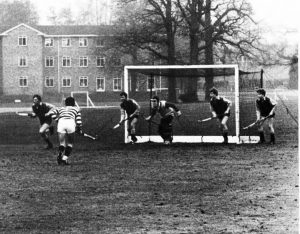 The major change for hockey came in 1968 when a legacy left to the School was used to build an all-weather redgra in front of 1 North. Stuart Sleeman () highlighted the pre-redgra problems.”We had always struggled on clay pitches. Even Clare’s Oak would frequently be waterlogged at the corner nearest the tree. So many of our matches had to be cancelled. Our style of hockey was, out of necessity, one where most of us just pushed or hit the ball ahead and then ran as fast as we could after it hoping the opposition’s defence would be unable to stop it. Some had good stick work but on clay the ball would just get stuck in the mud …”
The major change for hockey came in 1968 when a legacy left to the School was used to build an all-weather redgra in front of 1 North. Stuart Sleeman () highlighted the pre-redgra problems.”We had always struggled on clay pitches. Even Clare’s Oak would frequently be waterlogged at the corner nearest the tree. So many of our matches had to be cancelled. Our style of hockey was, out of necessity, one where most of us just pushed or hit the ball ahead and then ran as fast as we could after it hoping the opposition’s defence would be unable to stop it. Some had good stick work but on clay the ball would just get stuck in the mud …”
David Emms, the then headmaster, had been agitating for an all-weather facility for several years – not just for hockey but also tennis in the summer – and the investment brought almost immediate rewards. In 1970 the School 1st XI and all lower-school sides were unbeaten, and The Cranleighan noted that “the standard of hockey is undoubtedly rising fast”.
It received a further fillip with the arrival of Peter Freitag in 1972. An Great Britain Olympian and captain of England’s indoor side, he brought a fresh approach. A side was entered into the Guildford indoor tournament. “We won the league and really cheesed off the likes of Staines, Woking and others,” David Knapp (West 1977) recalled. “We overheard the opposition in the first few weeks saying “only playing a bunch of schoolboys tonight and an ageing teacher or two so one easy game’.” The apogee of that period was in 1975 when the 1st XI won every school match, attended a festival in Barcelona, and beat Kingston Grammar, only the second time in 14 years they had lost to another school.
In 1979 the girls played their first formal matches. By 1982 they had an expansive fixture list and between 1982 and 1984 put together a remarkable run of 40 unbeaten matches (including 36 wins) scoring 151 goals and conceding only 16. The highlight was a 10-0 win over Wellington in 1983 (the 1989 side improved on that, thrashing Wellington 13-0). Girls hockey continued to thrive and Sally Quick said that “we set the trend in our professional and serious approach to girls’ sport”.
A second redgra – Pickup – was built in 1979, the same year Cranleigh beat Framlingham 4-0 in the Varsity match warm-up at Lord’s, and an astroturf, Lintotts, followed in 1986. Both redgras were subsequently converted into astroturfs – Marcon in 2005, while a fourth, named after Olympic captain David Westcott (2 North 1975) was opened at the prep school.
Perhaps the two most significant boosts for hockey came in the late 1990s. The first was Cranleigh’s decision to go fully co-educational in 1999, allowing girls to be coached in the same way from a much younger age. The second was the introduction of the sport-for-all philosophy by Guy Waller, which meant we fielded more sides than many far larger schools, allowing us to take on block fixtures against some of the strongest opponents.
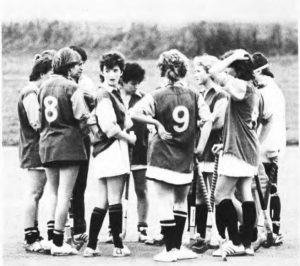 Standards under Steve Batchelor – a former Cranleigh Prep pupil and a member of the 1988 Olympic gold-medal winning side – had been improving for several years and after stepping down from coaching both boys’ and girls’ 1st XIs he has since been the foundation for success with his keen eye for technical detail with players at Under-14 level.
Standards under Steve Batchelor – a former Cranleigh Prep pupil and a member of the 1988 Olympic gold-medal winning side – had been improving for several years and after stepping down from coaching both boys’ and girls’ 1st XIs he has since been the foundation for success with his keen eye for technical detail with players at Under-14 level.
A further boost came with the appointment of Richard Organ as the School’s first director of hockey in 2007. Rupert Kefford, head of hockey, said the impact was significant. “The result was a greater provision for elite players and a justifiable increased expectation for our top sides to do well: it has meant that Cranleigh has been able to support and encourage a good number of very talented and exciting players who have received recognition at club, county and regional level, and several who have gone on to play for England.
“As with other areas, the 7 to 18 philosophy, which is very important to both sides of the road, has greatly benefited hockey with senior players from the prep school regularly training with the senior school.”
The introduction of regular indoor hockey, initially with the opening of the Trevor Abbott Sports Centre in 2002, also played a significant part. It finally provided a facility for indoor training (there had been tentative but unfulfilled plans in the early 1970s to convert a cowshed at High Upfold into an indoor training area) with a skilled coach. “The Indoor legacy is Richard Organ’s,” Kefford said. “That’s been the real game changer for our success in the last ten years.”
At the top level there has been unprecedented success in the last decade with over 30 titles from Surrey and IAPS Under-11s, through to girls and boys Under-18s at national indoor and outdoor level. This will be hard to maintain in the face of some schools actively recruiting top players and offering substantial financial support to them at all levels, but Cranleigh will continue to punch above its weight.
The School also currently run up to four hockey trips or tournaments and fields 13 girls’ and 16 boys’ teams for most block fixtures on a Saturday, a number school twice our size struggle to match.
